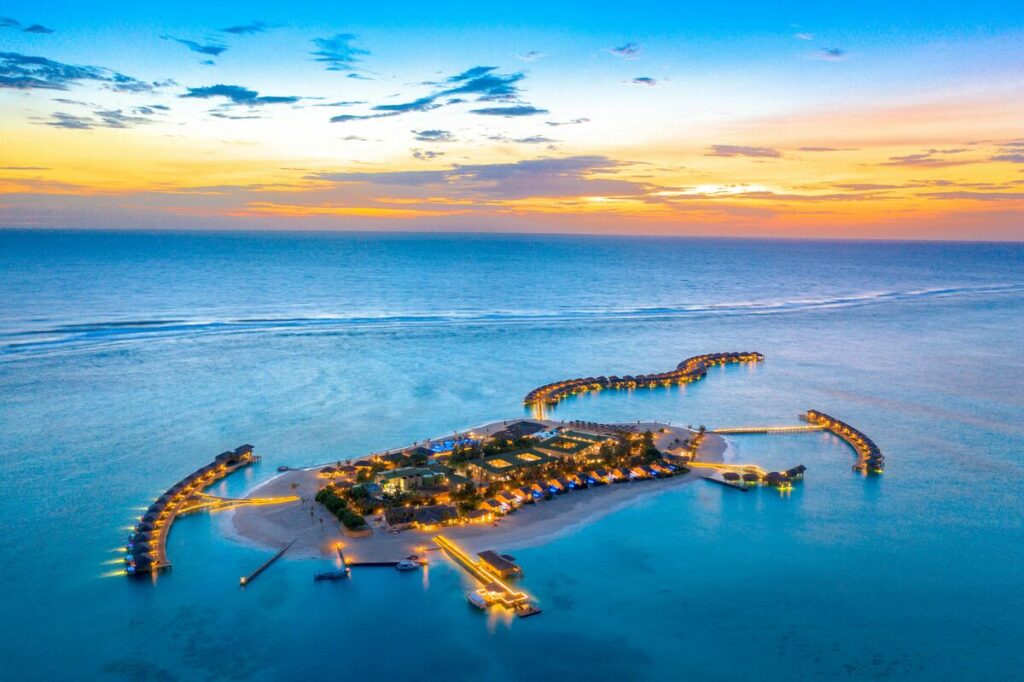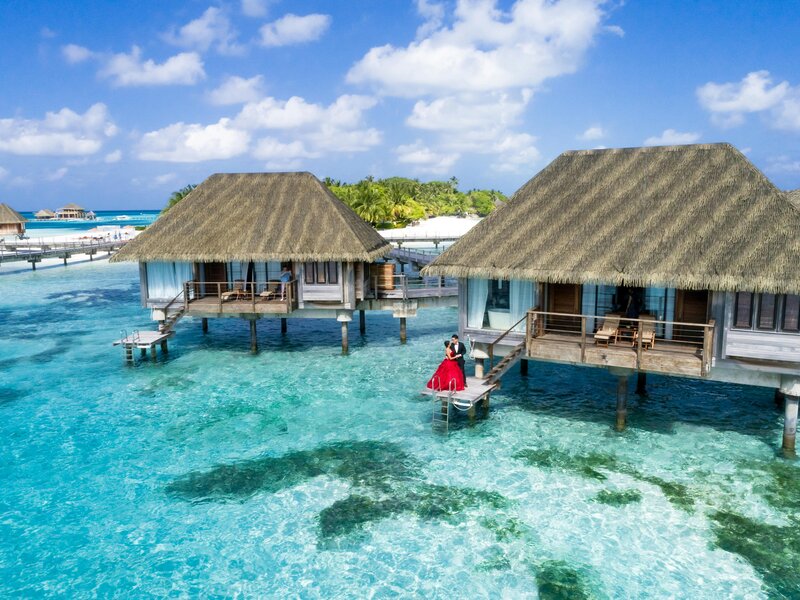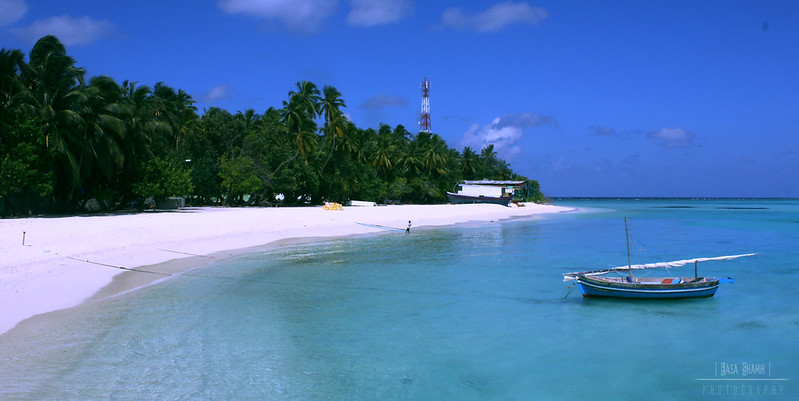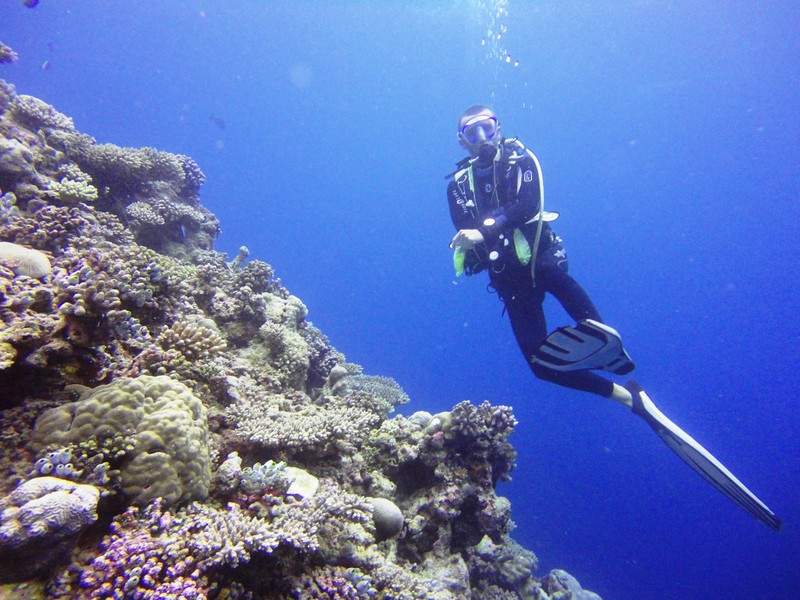Budget Diving in the Maldives: How to Dive for Less in 2025


Understanding the Real Costs of Maldives Diving
Before we talk about how to save money, you need to understand where costs typically come from and what you’re actually paying for in different scenarios.
Resort Diving Costs
Luxury resort diving represents the expensive end of the spectrum. A single boat dive at a quality resort typically runs $80-120 USD including tanks and weights. If you need equipment rental, add another $25-40 per dive for full gear setup. Night dives command premium pricing at $100-150. The boat fees—yes, some resorts charge boat fees separately from dive fees—can add $15-30 per person per dive.
Dive packages at resorts offer some savings but not dramatic ones. A 6-dive package might cost $480-650 instead of $540-720 for individual dives. You’re saving maybe 10-15% by committing upfront. A 10-dive package brings the per-dive cost down to $70-90, which is better but still expensive compared to what you’ll pay on local islands.
The accommodation is where resorts really hit your wallet. Budget resort rooms (if that phrase even means anything in the Maldives) start around $250-350 per night. Mid-range resorts run $400-700 per night. Luxury properties command $800-2,000+ per night, and ultra-luxury like Soneva or One&Only can exceed $3,000 per night. These prices typically include breakfast but not other meals, though some resorts offer all-inclusive packages that bundle food and drinks.
Do the math: seven nights accommodation ($2,500-3,500), ten dives ($800-1,000), equipment rental if needed ($250-400), food and drinks ($300-800), transfers ($100-200), and you’re looking at $4,000-6,000 per person before flights. For couples, that’s $8,000-12,000 total. That’s not travel—that’s a down payment on a car.
Local Island Diving Costs
Local islands flip the pricing model completely. A boat dive including tanks and weights typically costs $40-58 USD depending on the island and dive center. Some centers charge $35-40 for single dives, with package discounts bringing costs down to $30-35 per dive for 10+ dive packages. Equipment rental runs $8-15 per item per dive, or $20-30 for full gear setup.
Guesthouse accommodation on local islands ranges from $35-80 per night for clean, air-conditioned rooms with private bathrooms and breakfast included. Mid-range guesthouses with better locations and amenities run $60-100. Even nicer boutique guesthouses rarely exceed $120 per night. These prices often include breakfast, and many offer full-board options (all meals) for $20-30 extra per day.
Let’s run the same calculation: seven nights accommodation ($350-500), ten dives ($350-450), equipment rental if needed ($150-250), food beyond breakfast ($150-250), local transportation ($30-50), and you’re at roughly $1,000-1,500 per person before flights. That’s 25-30% of resort costs for access to the identical dive sites with similar safety standards and often equally experienced guides.
Liveaboard Costs
Liveaboards occupy the middle ground price-wise while offering maximum dive opportunities. Budget liveaboards cost $1,200-1,800 per person for 7-8 nights including accommodation, all meals, 17-21 dives, and transfers. Mid-range boats run $1,800-2,800. Luxury liveaboards exceed $3,000+ per week.
When you calculate cost per dive, liveaboards often beat both resorts and local islands—you’re looking at $50-80 per dive once you divide the package price by dive count, and that includes food and accommodation. The upside is reaching remote sites and maximizing dive time. The downside is you’re on a boat continuously without the option to take rest days or enjoy land-based activities. For detailed comparisons of liveaboard options at different price points, check the comparing liveaboard and resort costs guide which breaks down exactly what you get at each price level.
Best Budget Islands for Diving
Not all local islands are created equal for diving. Some have better access to quality dive sites, more established dive centers, and better infrastructure. Here are the standouts based on my experiences and conversations with other budget divers.
Maafushi (South Male Atoll)
Maafushi is probably the most developed local island for budget tourism and the easiest for first-time visitors to the Maldives. Located in South Male Atoll just 27 kilometers from Male, it’s accessible by public ferry ($2-3, about 90 minutes) or speedboat ($25-30, 30 minutes). The island has probably 40+ guesthouses ranging from basic to quite nice, giving you lots of options at various price points.
Diving from Maafushi provides access to South Male Atoll sites including several thilas, reef dives, and occasional whale shark encounters. You won’t hit the famous North Male sites like Banana Reef without long boat rides, but South Male has excellent diving in its own right. Multiple dive centers operate from Maafushi—I’ve used Absolute Diving and Divers Lodge, both solid operations with good safety records and fair pricing around $45-55 per dive.
The advantage of Maafushi is convenience and choice. The disadvantage is that it’s become quite touristy and busy. You’ll see lots of other travelers, which some people appreciate (instant social scene) and others find detracts from the authentic experience. Prices have crept up as Maafushi has become popular, though it’s still significantly cheaper than resorts.
Fulidhoo (Vaavu Atoll)
Fulidhoo is my personal favorite budget island in the Maldives. This tiny island in Vaavu Atoll (also called Felidhu Atoll) has a population of maybe 200 people, a handful of guesthouses, and some of the best diving I’ve experienced anywhere. The island is famous for night dives with nurse sharks—multiple sharks cruise the house reef after dark, and you can dive with them in 5-10 meters of water in conditions that are safe even for newer divers.
Fulidhoo Dive Center charges around $58 per dive including service charges (the Maldives has numerous hidden taxes, so always confirm final prices). The sites accessible from Fulidhoo include channels with strong currents and excellent shark action, thilas covered in soft corals, and that incredible house reef for night diving. Accommodation ranges from basic guesthouses at $40-60 per night to nicer places like Kinan Retreat at $70-100.
Getting to Fulidhoo requires either public ferry ($3-4, about 3.5 hours from Male) or speedboat transfer ($50-60 per person, 1.5 hours). The ferry is incredibly cheap but runs limited schedules. Most people take the speedboat for convenience, which is still reasonable when split among a group.
The vibe on Fulidhoo is laid-back and genuinely local. You’ll see island residents going about their daily lives. There’s no “bikini beach” segregation like on more touristy islands—the entire island beach is available. This is authentic Maldivian island life with world-class diving, and that combination is rare.
Dhigurah (South Ari Atoll)
Dhigurah in South Ari Atoll offers the best budget access to whale shark diving. The island sits right in the heart of the South Ari Marine Protected Area where resident whale sharks cruise year-round. Dive centers here offer both regular diving ($40-50 per dive) and dedicated whale shark snorkeling trips ($40-60) that leave early morning specifically to find these giants.
Accommodation options on Dhigurah range from basic guesthouses at $45-65 per night to nicer boutique places at $80-120. Tme Retreats and Boutique Beach Hotel get good reviews from divers. The island has a proper beach, multiple restaurants, and that small-island charm that makes Maldives special.
Access to Dhigurah has gotten easier since a domestic airport opened nearby. You can fly from Male to Maamigili (25 minutes, $80-100), then take a short boat transfer. Or take speedboat directly from Male ($60-80, 2-3 hours depending on sea conditions). The public ferry is an option too ($5-6) but takes 4+ hours and runs limited schedules.
Thulusdhoo (North Male Atoll)
Thulusdhoo attracts both divers and surfers thanks to its proximity to excellent waves and dive sites. Located in North Male Atoll just 45 minutes by speedboat from Male ($25-30), it’s one of the most accessible local islands. The public ferry costs under $2 and takes about an hour.
Diving from Thulusdhoo provides access to famous North Male sites including Banana Reef, HP Reef, and various thilas. Some dive sites are practically on your doorstep, minimizing boat ride time. Dive costs run $45-55 per dive. Guesthouses range from $50-90 per night for decent quality. For comprehensive coverage of best affordable diving spots in the Maldives accessible from local islands like Thulusdhoo, the main guide provides detailed site descriptions and access information.
The surf scene on Thulusdhoo creates a different vibe than other local islands—it’s slightly more party-oriented with bars and social gatherings (unusual for Maldives local islands). If you want diving plus an active social scene, Thulusdhoo delivers. If you prefer quieter, more traditional island life, look elsewhere.
Rasdhoo (Ari Atoll)
Rasdhoo is a small local island in northern Ari Atoll known for excellent diving and particularly for hammerhead shark sightings at Rasdhoo Madivaru during dawn dives. The island has limited guesthouse options—maybe 10-15 properties—keeping it less crowded than places like Maafushi. Prices run $50-80 per night for quality accommodations.
Dive costs are around $45-55 per dive with good operators like Rasdhoo Dive Club. The sites accessible from Rasdhoo include channels, thilas, and that famous hammerhead cleaning station. Manta encounters are possible here too, particularly during the southwest monsoon when they feed at cleaning stations.
Getting to Rasdhoo requires speedboat from Male ($50-70 per person, about 2 hours) as there’s no airport nearby. The limited access keeps tourist numbers manageable and maintains the authentic feel. If you’re serious about diving and willing to sacrifice some convenience for better experiences, Rasdhoo is excellent.
Strategic Ways to Cut Costs
Beyond choosing local islands over resorts, several strategies can significantly reduce your total trip costs.
Travel During Low Season
This is perhaps the single most effective way to save money. During the southwest monsoon (May-November), prices drop dramatically—accommodations cost 30-50% less than peak season, dive centers offer discounts, and you can often negotiate better package deals. I’ve seen guesthouses that charge $80 in February drop to $45 in September.
Yes, you’ll deal with rougher conditions, reduced visibility, and more rain. But the marine life during monsoon season is actually better—whale sharks and manta rays appear in greater numbers. If you’re an experienced diver comfortable with current and you prioritize encounters over perfect visibility, low season offers exceptional value. For month-by-month analysis of what conditions and costs to expect, the seasonal guide provides comprehensive breakdowns.
Book Dive Packages Instead of Single Dives
Nearly every dive center offers package discounts for multiple dives. Buying 10 dives upfront instead of paying for single dives can save $5-10 per dive. Over ten dives, that’s $50-100 in savings. Some centers offer unlimited diving packages—pay a flat rate ($300-400 for a week) and dive as many times as you want. If you’re planning to dive twice daily for a week, unlimited packages provide tremendous value.
Just make sure you’ll actually use all the dives you’re buying. I’ve seen people purchase 12-dive packages, then only dive 8 times because they got tired or weather conditions prevented diving. Those pre-paid unused dives represent wasted money. Be realistic about how much diving you’ll actually do.
Bring Your Own Gear
If you dive regularly and own your gear, bring it. Equipment rental in the Maldives costs $8-15 per item per dive, or $20-30 for full setup. Over ten dives, that’s $200-300 in rental fees. The baggage fees for checking dive gear ($50-100 each way on most airlines) pay for themselves in just a few dives.
At minimum, bring your own mask, computer, and wetsuit. These items don’t take much luggage space, and having equipment you know fits properly makes a real difference in comfort and safety. Regulators and BCDs are bulkier—if you’re not diving frequently enough to justify the baggage fees, renting those items makes sense while bringing your personal stuff.
Use Public Ferries for Transfers
Public ferries in the Maldives are dirt cheap—typically $2-6 per person for routes that speedboats charge $30-70 for. The catch is time. Ferries take 2-4 times longer than speedboats and run limited schedules (often just a few departures per week). If your schedule is flexible and you don’t mind the extra travel time, ferries offer massive savings.
The ferry schedules are available on the Maldives Transport and Contracting Company website (MTCC), though routes and times change periodically. Most guesthouses can help you figure out ferry schedules if you ask when booking. Just build in extra time—ferries do occasionally get delayed or cancelled due to weather.
Eat Local Food
Resort restaurants charge resort prices—$20-40 for entrees. Guesthouse restaurants on local islands offer Maldivian and international dishes for $5-12 per meal. Street food and local cafes (called “hotaa” in Dhivehi) serve meals for $3-6. Eating local can easily save you $30-50 per day compared to resort dining.
Full-board packages at guesthouses (all meals included) typically cost $20-30 per day beyond the room rate. This is convenient and ensures you’re fed without thinking about it, though you lose the flexibility to explore different restaurants. I usually do breakfast included (which comes with most guesthouse bookings) and then pay separately for lunch and dinner, giving me options while keeping costs reasonable.
Travel in Small Groups
Many costs in the Maldives are per boat rather than per person. Speedboat transfers, for example, often cost $150-200 for the boat regardless of passenger count (up to 8-10 people). If you’re traveling solo, you pay full price. If you’re in a group of four, you split it four ways and each pay $40-50 instead of $150-200.
Some dive centers offer private boat charters where a group can hire a boat to specific sites. If you can gather 6-8 divers, private charters sometimes work out cheaper per person than joining regular dive boat schedules, plus you have complete control over which sites you visit and how long you stay.
Hidden Costs and What to Watch For
The Maldives has numerous taxes and fees that aren’t always included in advertised prices. Here’s what to watch for so you’re not surprised by bills at the end of your trip.
Service charges and GST (Goods and Services Tax) add 10-16% to most tourism services. When a dive center advertises $50 per dive, the final price is often $55-58 after service charge and GST. Always confirm whether quoted prices include or exclude these taxes. Most local island businesses include taxes in advertised prices, but some don’t.
Marine park fees apply to certain atolls and protected areas. These typically run $6-15 per person per trip and go toward conservation efforts. South Ari Marine Protected Area charges around $10 per diver. Hanifaru Bay (for manta snorkeling) charges $100+ per person. These fees are usually collected by dive centers and included in package prices, but confirm this upfront.
Equipment delivery fees appear at some resorts and liveaboards. If you bring your own gear, some operations charge $5-10 per day for “equipment storage and handling.” This feels like a fee for the sake of fees, but some places charge it. Local island dive centers don’t typically charge this.
Nitrox costs extra at most facilities—$5-10 per fill, or $80-150 per week for unlimited nitrox. If you’re nitrox certified and plan to dive multiple times daily (especially on liveaboards), nitrox makes sense for the extended bottom times and shorter surface intervals. Budget for this if it applies to you.
Dive insurance is mandatory at many operations. If you don’t have annual dive insurance through DAN or another provider, you’ll be required to purchase short-term coverage. This costs $25-75 depending on trip length. Get annual dive insurance before your trip—it’s cheaper than buying short-term coverage and provides better coverage. For comprehensive information on insurance requirements and affordable dive insurance options, the safety guide covers what you need and where to get it at the best rates.
Sample Budget Breakdown
Let me give you a realistic example of what a budget week of diving in the Maldives actually costs using Fulidhoo as the base island. This is based on my actual spending from a trip in 2024.
Accommodation: 7 nights at Kinan Retreat, $65/night including breakfast = $455
Diving: 12-dive package at Fulidhoo Dive Center = $540 (roughly $45/dive after package discount)
Equipment rental: Brought own mask, computer, wetsuit. Rented BCD and regulator only at $15/dive = $180
Lunch and dinner: Averaged $8-10 per meal, two meals per day = $125
Transfers: Speedboat from Male to Fulidhoo and return = $120 total
Miscellaneous: Snacks, water, tips for dive guides = $80
Total on-island costs: $1,500
Add flights (which vary wildly by origin), and my total trip cost from Bangkok was about $1,800 including everything. From the US, budget around $2,500-3,000 total depending on flight costs. That’s for 12 dives over seven days on an authentic Maldivian island with excellent diving conditions. Compare that to $5,000-8,000 for resort-based diving and the savings are obvious.
What You Give Up with Budget Diving
I want to be honest about the compromises because budget diving in the Maldives isn’t the same experience as resort diving beyond just the cost difference.
You won’t have luxury accommodations. Guesthouse rooms are clean and comfortable with air conditioning and hot water, but they’re basic. Don’t expect fancy toiletries, turn-down service, or lavish furnishings. Your room is a place to sleep, not a destination unto itself.
Alcohol isn’t available on local islands. The Maldives is an Islamic country, and local islands don’t serve alcohol. Some guesthouses arrange “alcohol boat trips” where you can drink on a boat offshore, but this adds cost and hassle. If having drinks with dinner is important to your vacation experience, local islands will disappoint you.
You need to dress modestly outside of designated bikini beaches. This means covering shoulders and knees when walking around the main island areas. Most local islands have designated bikini beaches where normal swimwear is fine, but you can’t wear bikinis or short shorts in town. Some people find these restrictions annoying; others consider them reasonable respect for local culture.
Infrastructure is more basic. You won’t find spas, multiple restaurants, or fancy pools on local islands. Entertainment is diving, snorkeling, and hanging out. If you need constant activities and amenities to enjoy a vacation, local islands might feel boring after a few days.
The diving operations are smaller with less fancy equipment. You’ll dive from simple boats rather than custom dive vessels. Gear might be older (though still safe—reputable operations maintain equipment properly). Camera facilities might be basic rinse buckets rather than dedicated camera tables and rinse systems.
That said, you’re diving the exact same sites as resort guests. The reef doesn’t know or care whether you paid $50 or $150 for your dive. The whale shark doesn’t charge more to swim near resort divers than local island divers. The core experience—the underwater part that matters—is identical. You’re just making trade-offs in comfort and luxury above water.
Final Thoughts on Budget Diving the Maldives
The Maldives is no longer an exclusive destination reserved for wealthy travelers who can afford $8,000 vacations. The growth of local island tourism has made it genuinely accessible to budget travelers and divers who previously couldn’t justify the costs. You can now experience world-class diving—whale sharks, manta rays, healthy reefs, abundant marine life—for costs comparable to diving Thailand, Egypt, or Indonesia.
The key is managing expectations appropriately. You’re not getting the luxury resort experience. You’re getting excellent diving with comfortable but basic accommodations, authentic cultural experiences on inhabited islands, and significantly lower costs. If that trade-off works for you—if diving quality matters more than accommodation luxury—then budget Maldives diving offers incredible value.
Start by choosing your island carefully based on which atolls and dive sites you want to access. Research dive centers and read recent reviews. Book during low season if you can handle monsoon conditions. Bring your own gear if possible. Use public ferries when schedules allow. Eat local food. These strategies compound to create genuine savings that make the Maldives accessible on budgets that wouldn’t have been possible a decade ago.
The Maldives remains expensive compared to Southeast Asian diving destinations—there’s no changing that reality. But it’s no longer prohibitively expensive, and that difference matters. If you’ve been putting off a Maldives diving trip because you assumed it was out of reach financially, it’s time to reconsider. With proper planning and willingness to embrace local island life, you can make it happen for $1,500-2,500 including everything.
Book your flights, find a local island with good dive center reviews, pack your gear, and get ready to experience some of the world’s best diving without the luxury resort price tag. The reefs, sharks, and mantas are waiting, and they’re just as spectacular whether you’re sleeping in an overwater villa or a $60 guesthouse room.









